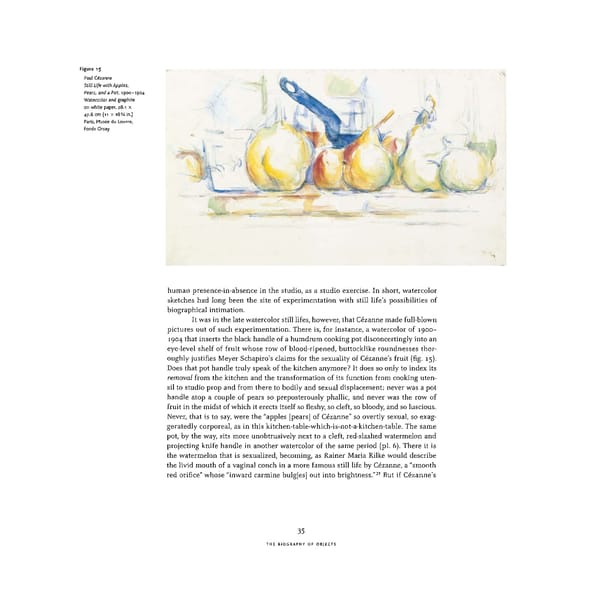Figure 15 Paul Cezanne Still Life with Apples, Pears, and a Pot, 1900-1904 Watercolor and graphite on white paper, 28.1 x 47.8 cm (11 x 18 3A in.) Paris, Musee du Louvre, Fonds Orsay human presence-in-absence in the studio, as a studio exercise. In short, watercolor sketches had long been the site of experimentation with still life's possibilities of biographical intimation. It was in the late watercolor still lifes, however, that Cezanne made full-blown pictures out of such experimentation. There is, for instance, a watercolor of 1900- 1904 that inserts the black handle of a humdrum cooking pot disconcertingly into an eye-level shelf of fruit whose row of blood-ripened, buttocklike roundnesses thor- oughly justifies Meyer Schapiro's claims for the sexuality of Cezanne's fruit (fig. 15). Does that pot handle truly speak of the kitchen anymore? It does so only to index its removal from the kitchen and the transformation of its function from cooking uten- sil to studio prop and from there to bodily and sexual displacement: never was a pot handle atop a couple of pears so preposterously phallic, and never was the row of fruit in the midst of which it erects itself so fleshy, so cleft, so bloody, and so luscious. Never, that is to say, were the "apples [pears] of Cezanne" so overtly sexual, so exag- geratedly corporeal, as in this kitchen-table-which-is-not-a-kitchen-table. The same pot, by the way, sits more unobtrusively next to a cleft, red-slashed watermelon and projecting knife handle in another watercolor of the same period (pi. 6). There it is the watermelon that is sexualized, becoming, as Rainer Maria Rilke would describe the livid mouth of a vaginal conch in a more famous still life by Cezanne, a "smooth 21 red orifice" whose "inward carmine bulg[es] out into brightness." But if Cezanne's 35 THE BIOGRAPHY OF OBJECTS
 Cézanne in the Studio: Still Life in Watercolors Page 49 Page 51
Cézanne in the Studio: Still Life in Watercolors Page 49 Page 51